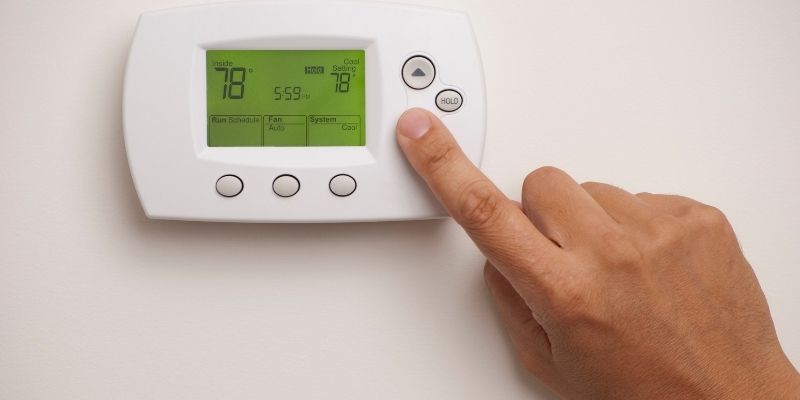Setting the right temperature on your thermostat during winter can be crucial for both comfort and energy savings. The U.S. Department of Energy recommends the following strategies to save money on heating costs during the winter months:
- Set Your Thermostat to 68°F (20°C) While You’re Awake: This temperature is typically warm enough to keep you comfortable while still conserving energy.
- Lower the Temperature While You’re Asleep or Away from Home: By reducing the temperature by 7°F-10°F (4°C-6°C) for 8 hours per day (such as when you’re asleep or out of the house), you can save up to 10% a year on heating (and cooling) costs. A programmable thermostat can make this process automatic and simple.
- Use a Smart or Learning Thermostat: Some advanced thermostats can learn your daily routine and automatically adjust temperatures to save energy when you’re not home or when you’re asleep. More information can be found on smart thermostats from Energy.gov.
- Seal and Insulate Your Home: This complements the thermostat setting by keeping the warm air in and cold air out. Here’s a guide from the Department of Energy on how to properly insulate your home.
- Utilize Ceiling Fans: If you have ceiling fans, running them in a clockwise direction at a low speed can help distribute warm air more evenly throughout the room. This may allow you to feel comfortable at a lower thermostat setting.
- Wear Warm Clothing: Dressing warmly inside the house can make cooler temperatures feel more comfortable, allowing for lower thermostat settings.
Keep in mind that these are general recommendations, and the optimal temperature may vary depending on your individual preferences, the energy efficiency of your home, the outdoor temperature, and other factors. Experimenting with different settings and paying attention to how they affect your comfort and your energy bills can help you find the perfect balance.
Zeeshan is a seasoned tech expert and senior writer at Teckrr.com. With over 10 years of experience in tech journalism, he brings insightful analysis and up-to-date information on the latest tech trends. Zeeshan holds a MBA degree from Business and Tech University and is known for his engaging writing style and ability to demystify complex tech topics. Stay connected with the cutting-edge of technology through his expert lens.

Leave a Reply